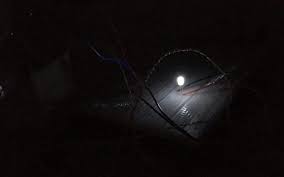
Breaking News
 The Decline Of Boys Participating In Youth Sports Has Led To A Generation Of Soft...
The Decline Of Boys Participating In Youth Sports Has Led To A Generation Of Soft...
 First Arrests Hint At How Billions In California Homeless Dollars Vanished...
First Arrests Hint At How Billions In California Homeless Dollars Vanished...
 Trump Refiles $15 Billion Defamation Lawsuit Against New York Times After Court Dismissal
Trump Refiles $15 Billion Defamation Lawsuit Against New York Times After Court Dismissal
 Can Diet-Changes Really Transform ADHD? One Family's Remarkable Discovery
Can Diet-Changes Really Transform ADHD? One Family's Remarkable Discovery
Top Tech News
 3D Printed Aluminum Alloy Sets Strength Record on Path to Lighter Aircraft Systems
3D Printed Aluminum Alloy Sets Strength Record on Path to Lighter Aircraft Systems
 Big Brother just got an upgrade.
Big Brother just got an upgrade.
SEMI-NEWS/SEMI-SATIRE: October 12, 2025 Edition
 Stem Cell Breakthrough for People with Parkinson's
Stem Cell Breakthrough for People with Parkinson's
 Linux Will Work For You. Time to Dump Windows 10. And Don't Bother with Windows 11
Linux Will Work For You. Time to Dump Windows 10. And Don't Bother with Windows 11
 XAI Using $18 Billion to Get 300,000 More Nvidia B200 Chips
XAI Using $18 Billion to Get 300,000 More Nvidia B200 Chips
 Immortal Monkeys? Not Quite, But Scientists Just Reversed Aging With 'Super' Stem Cells
Immortal Monkeys? Not Quite, But Scientists Just Reversed Aging With 'Super' Stem Cells
 ICE To Buy Tool That Tracks Locations Of Hundreds Of Millions Of Phones Every Day
ICE To Buy Tool That Tracks Locations Of Hundreds Of Millions Of Phones Every Day
 Yixiang 16kWh Battery For $1,920!? New Design!
Yixiang 16kWh Battery For $1,920!? New Design!
 Find a COMPATIBLE Linux Computer for $200+: Roadmap to Linux. Part 1
Find a COMPATIBLE Linux Computer for $200+: Roadmap to Linux. Part 1
This Cheap Little Device Generates Light and Electricity Simply By Harnessing the Cold Night Sky

The scientists described their device and reported their findings this week in the online journal Joule.
"Remarkably, the device is able to generate electricity at night, when solar cells don't work," says lead author Aaswath Raman, an assistant professor of materials science and engineering at the University of California, Los Angeles. "Beyond lighting, we believe this could be a broadly enabling approach to power generation suitable for remote locations, and anywhere where power generation at night is needed."
While solar cells are an efficient source of renewable energy during the day, there is currently no similar renewable approach to generating power at night. Solar lights can be outfitted with batteries to store energy produced in daylight hours for night-time use, but the addition drives up costs.
The device developed by Raman and Stanford University scientists Wei Li and Shanhui Fan sidesteps the limitations of solar power by taking advantage of radiative cooling, in which a sky-facing surface passes its heat to the atmosphere as thermal radiation, losing some heat to space and reaching a cooler temperature than the surrounding air.



